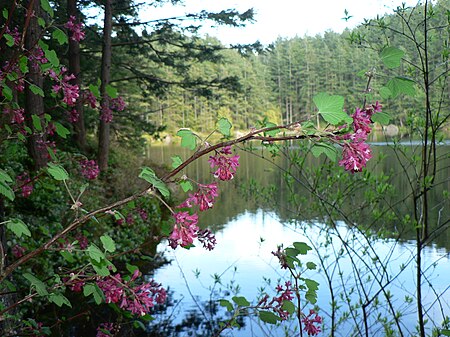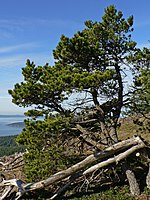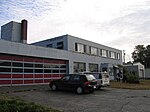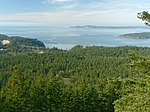Little Cranberry Lake (Washington)

Little Cranberry Lake is located within Anacortes Community Forest Lands on Fidalgo Island in the northwestern corner of the U.S. state of Washington. The lake is deepened by a dam on the northern end which was constructed in the 1930s. The previous dam had broken in 1921 releasing a large amount of water which crashed down the hills to the beach.The lake basin is part of a 10-mile long, north-south wilderness corridor that roughly follows an ancient moraine, which snakes its way down the middle of the island. This moraine is a major source of gravel for the region which adjoins Anacortes, Washington. The trails in this corridor are maintained but are of variable quality. Almost all are ideal for mountain biking, in particular. Little Cranberry Lake is a popular swimming location, especially for visitors to the annual summer music celebration, What the Heck Fest.
Excerpt from the Wikipedia article Little Cranberry Lake (Washington) (License: CC BY-SA 3.0, Authors, Images).Little Cranberry Lake (Washington)
123,
Geographical coordinates (GPS) Address Nearby Places Show on map
Geographical coordinates (GPS)
| Latitude | Longitude |
|---|---|
| N 48.494 ° | E -122.642 ° |
Address
123
123
98221
Washington, United States
Open on Google Maps






